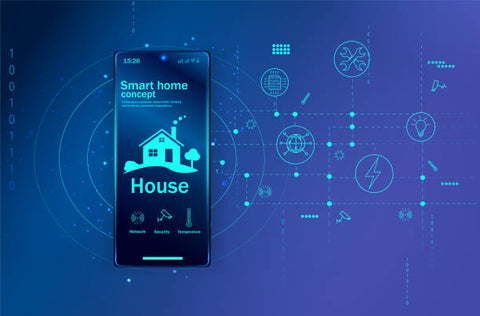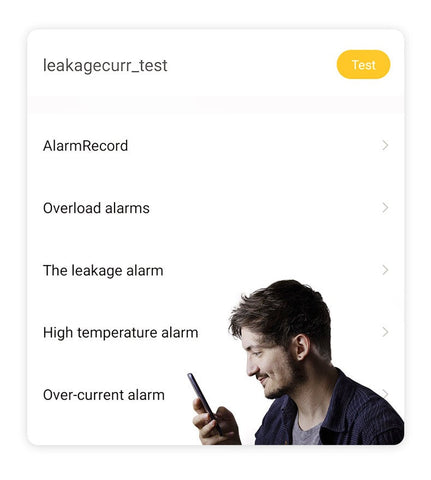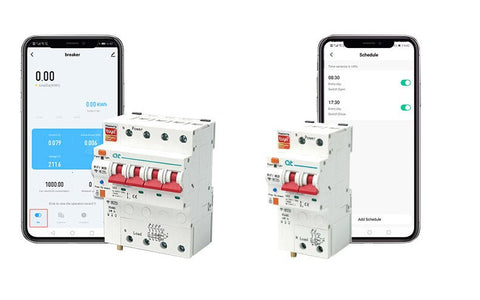Exploring the Benefits and Functionality of Smart RCBO: A Comprehensive Guide

Electrical safety is a paramount concern in any residential or commercial setting. To safeguard against electrical hazards, the implementation of residual current circuit breakers with overcurrent protection (RCBOs) is crucial. These devices monitor electrical circuits and protect against two major threats: residual currents and overcurrents. However, in recent years, a new generation of RCBOs has emerged, known as smart RCBOs, which offer advanced features and functionalities beyond their traditional counterparts.
Understanding RCBOs: Basics and Purpose
Before diving into the realm of smart RCBOs, it is essential to have a clear understanding of RCBOs' basic concepts and purposes. RCBOs, also referred to as residual current devices (RCDs) with overcurrent protection, are electrical safety devices that combine the functions of residual current devices (RCDs) and miniature circuit breakers (MCBs) into a single unit.
The primary purpose of RCBOs is twofold: residual current protection and overcurrent protection. Residual currents, which occur when electricity leaks from a circuit due to faults or grounding issues, can pose significant risks of electric shock or fire hazards. RCBOs constantly monitor the current flow and quickly trip the circuit if any imbalance is detected, thereby preventing potential harm. Additionally, RCBOs offer protection against overcurrents caused by excessive loads or short circuits, preventing damage to the electrical system.
Introducing Smart RCBOs
Smart RCBOs take the concept of electrical safety to the next level by incorporating advanced features and communication capabilities. These intelligent devices are designed to provide real-time monitoring, remote control, energy optimization, and data analytics, revolutionizing the way electrical systems are managed and controlled.
One key distinction between smart RCBOs and traditional RCBOs lies in their communication capabilities. Smart RCBOs are equipped with wireless communication protocols such as WiFi, Zigbee, or Z-Wave, allowing them to connect to a broader smart home or building automation system. This integration enables seamless control, monitoring, and automation of electrical circuits, bringing convenience and efficiency to the forefront.
Advantages of Smart RCBOs

The benefits offered by smart RCBOs are numerous and impactful, making them an attractive choice for modern electrical installations. Let's explore some of their key advantages:
Enhanced safety features
Smart RCBOs excel in real-time monitoring of electrical parameters. They constantly analyze the current flow, voltage levels, and power consumption, enabling immediate detection and response to electrical faults. By quickly tripping the circuit when abnormalities are detected, smart RCBOs provide effective protection against electric shocks and potential fire hazards.
Remote access and control
With smart RCBOs, homeowners and facility managers gain the ability to monitor and control electrical circuits remotely. Through dedicated smartphone applications or web-based interfaces, users can check the status of individual circuits, receive alerts in case of faults, and even turn off specific circuits if necessary. This remote access feature offers convenience, flexibility, and peace of mind, especially when managing a property remotely.
Energy efficiency
Smart RCBOs contribute to energy optimization in electrical systems. By continuously monitoring energy consumption, these devices can identify power-hungry devices or appliances and provide insights on optimizing energy usage. With the ability to control circuits remotely, users can turn off or schedule the operation of energy-consuming devices, promoting energy-saving practices and reducing electricity bills.
Data analytics and reporting
Another significant advantage of smart RCBOs is their ability to collect and analyze electrical data. These devices capture and store information on electrical parameters, allowing for detailed analysis and reporting. This data-driven approach facilitates troubleshooting, preventive maintenance, and the identification of potential issues before they escalate into larger problems.
Installation and Integration

Installation and integration of smart RCBOs require careful consideration and adherence to guidelines to ensure proper functionality and compatibility within the electrical system. Here are some key points to keep in mind:
Guidelines for installing smart RCBOs
When installing smart RCBOs, it is important to follow the manufacturer's instructions and any applicable electrical codes or regulations. Ensure that the power supply is turned off before installation, and make sure to connect the RCBO correctly to the electrical circuit. Proper wiring and secure connections are crucial to ensure the safety and effectiveness of the smart RCBO.
Compatibility considerations with existing electrical systems
Before integrating smart RCBOs into an existing electrical system, it is essential to assess compatibility. Verify the electrical specifications and ratings of the smart RCBO to ensure they align with the requirements of the electrical circuits. Consider factors such as voltage, current rating, and the type of electrical system (single-phase or three-phase) to ensure a seamless integration.
Integration with smart home automation systems
Smart RCBOs are designed to work harmoniously within a larger smart home or building automation system. Depending on the chosen communication protocol (Wi-Fi, Zigbee, Z-Wave, etc.), compatibility with the existing smart home ecosystem should be confirmed. This ensures that the smart RCBOs can be controlled and monitored through a centralized smart home hub or mobile application, allowing for seamless integration with other smart devices and automation routines.
Addressing cybersecurity concerns and data privacy
With the growing prevalence of connected devices, cybersecurity and data privacy are critical considerations. When integrating smart RCBOs into a smart home or building automation system, it is important to implement proper security measures, such as strong encryption protocols and secure authentication methods. Additionally, it is essential to review the manufacturer's privacy policy to ensure that data collected by the smart RCBOs is handled in a secure and privacy-conscious manner.
Popular Smart RCBO Brands and Models
In the market, several leading manufacturers offer a range of smart RCBOs, each with its own unique features and capabilities. Here are a few notable brands and models worth exploring:
AT-Q-ST-JWT Smart Circuit Breaker

This smart RCBO offers advanced monitoring and control features, along with energy consumption analytics. It integrates seamlessly with popular smart home systems and provides real-time notifications in case of electrical faults.
AT-QCB2 WiFi Circuit Breaker

Designed for home and commercial applications, this smart RCBO focuses on energy optimization and power management. It provides detailed reporting and analytics, allowing facility managers to make informed decisions for energy efficiency.
Case Studies and Real-World Applications
To further illustrate the benefits and functionality of smart RCBOs, let's explore a few real-world applications:
Residential Application
In a smart home setting, smart RCBOs provide homeowners with the ability to monitor and control their electrical circuits remotely. They can receive alerts in case of electrical faults, turn off specific circuits when not in use, and track energy consumption for better efficiency. For example, homeowners can remotely turn off lights or appliances accidentally left on, enhancing safety and reducing energy waste.
Commercial Application
In a commercial building, smart RCBOs offer enhanced electrical safety and energy management. Facility managers can monitor circuits in real time, quickly identify faults, and take immediate action to prevent potential hazards. Smart RCBOs also enable data-driven decision-making, allowing businesses to optimize energy consumption, reduce costs, and improve overall operational efficiency.
Conclusion
smart RCBOs have emerged as a transformative technology in the realm of electrical safety and control. Their advanced features, remote access capabilities, energy efficiency benefits, and data analytics functionalities offer significant advantages over traditional RCBOs. By embracing smart RCBOs, homeowners and businesses can enhance safety, improve energy efficiency, and gain greater control over their electrical systems, ushering in a new era of intelligent electrical management.
Contact:
AT-ELE
sale@at-ele.com
www.at-ele.com



